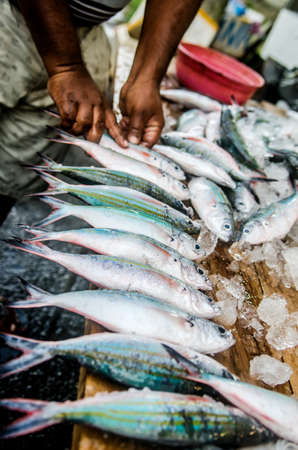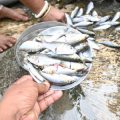Historical Context of Adivasi Fishing Rights
India’s Adivasi communities, recognised as the original dwellers of the subcontinent, have a time-honoured legacy tied to their ancestral rivers, lakes, and wetlands. The traditional fishing practices of Adivasis—be it the Gond’s use of bamboo traps in Madhya Pradesh or the Santhal’s riverine net-fishing in Jharkhand—are not just livelihood strategies but are deeply woven into their spiritual and socio-cultural fabric. Historically, these indigenous tribes enjoyed customary rights over water bodies that passed through their forests and villages. These rights were maintained through community consensus and ecological wisdom, ensuring sustainable harvests and minimal ecological disruption.
The arrival of colonial rule marked a significant shift. British policies increasingly commodified natural resources, undermining collective ownership and putting restrictions on traditional water usage. Post-independence India inherited a complex legal legacy that often failed to recognise the nuanced relationship between Adivasis and their aquatic ecosystems. The state’s focus on large-scale fisheries development, dam construction, and commercial aquaculture marginalised local practices, pushing Adivasi communities to the periphery.
However, India’s vibrant cultural pluralism continues to champion the unique eco-perspectives of its indigenous peoples. Today, a renewed dialogue about “jal-jungle-zameen” (water-forest-land) rights is emerging within policy circles and civil society forums. This ongoing evolution reflects India’s struggle—and opportunity—to harmonise modern resource management with the ancestral wisdom of its first fishers.
Legal Landscape and Policy Framework
India’s legal terrain regarding fishing rights for Adivasi communities is a dynamic battleground, shaped by both national frameworks and local statutes. The intersection of traditional practices and modern legal instruments forms the frontline where community access to fisheries is either protected or constrained. Here’s a strategic breakdown of the key legal mechanisms and their impact on Adivasi fishing rights:
Major Indian Fisheries Laws Impacting Adivasis
| Law/Policy | Scope | Implications for Adivasis |
|---|---|---|
| Indian Fisheries Act, 1897 | Central regulation of fishing practices and penalties for illegal activities | Largely colonial in spirit; rarely addresses customary rights of Adivasi fishers |
| Wildlife Protection Act, 1972 | Bans fishing in protected areas like National Parks and Sanctuaries | Frequently restricts traditional Adivasi access to ancestral waters |
| Panchayats (Extension to Scheduled Areas) Act, 1996 (PESA) | Empowers Gram Sabhas in Scheduled Areas over local resources | A game-changer: enables Adivasi self-governance over waterbodies but implementation is patchy |
| State-Specific Fisheries Acts (e.g., Odisha, Jharkhand) | Regulate inland fisheries and licensing at state/local level | Varies widely—some states acknowledge customary use, others impose commercial licensing hurdles |
| Forest Rights Act, 2006 (FRA) | Recognizes rights over minor forest produce, including waterbodies in forests | Progressive interpretations have upheld fishing as a traditional right in many court cases |
Key Challenges: Field-Level Realities vs Policy Intentions
The clash between statutory texts and ground realities often leaves Adivasi communities in a tactical disadvantage. Regulatory overlaps—such as between forest departments and fisheries authorities—create confusion. Many policies are top-down, overlooking indigenous eco-knowledge and sustainable fishing gear usage developed over generations.
Courtroom Strategies: Progressive Legal Interpretations
Indian courts have increasingly become arenas where Adivasi collectives contest restrictive orders. Recent verdicts have championed the principle that conservation must co-exist with livelihood rights, especially under the FRA and PESA. Yet, inconsistent application across states means the legal landscape remains unevenly contested territory. The struggle continues as Adivasi groups deploy legal literacy campaigns to turn the tide in their favour—a testament to resilience within India’s competitive regulatory ecosystem.

3. On-the-Ground Realities: Adivasi Struggles and Adaptations
Grassroots Realities: Navigating Traditional Waters
The daily lives of India’s Adivasi communities are woven tightly around local rivers, lakes, and reservoirs. These water bodies are not just sources of livelihood but are considered sacred spaces, passed down through generations under the guardianship of tribal elders. Fishing rights are guided by customary laws rather than formal state permissions. For example, in the tribal belts of Odisha and Jharkhand, fishing seasons and methods are dictated by ancestral wisdom, with strict taboos on overfishing or disturbing spawning grounds.
Kinship Networks and Collective Action
Access to fishing resources is often managed through kinship networks—extended families or clans that collectively negotiate who fishes where and when. In the Godavari basin, the Koya tribe organizes ‘fishing days’ where catches are shared among all members, ensuring food security even during lean periods. When outside commercial fishers encroach upon their waters, these kin groups band together, sometimes staging dharnas (peaceful protests) or engaging in dialogue with local panchayats to protect their rights.
Adapting Traditions for New Challenges
Modern challenges such as dam construction, pollution, and restrictions from forest departments have forced Adivasi fishers to innovate. In Chhattisgarh, some communities have revived traditional fish breeding techniques using bamboo traps and seasonal ponds to bypass bans on river fishing. Others form co-operatives to gain collective licenses from authorities, blending legal compliance with customary practices. These ground-level strategies reflect a competitive spirit—Adivasis aren’t just passive victims but active defenders and adaptors, leveraging both tradition and tactical negotiation to secure their fishing future.
Case Study: The Gond Fishers of Maharashtra
The Gond community along the Wainganga River demonstrates how grassroots tactics operate in real time. When faced with aggressive contractors seeking exclusive fishing leases, the Gonds employed a mix of legal petitions and community patrols to monitor river stretches. Women played key roles in mobilizing support through mahila mandals (women’s collectives), ensuring that traditional knowledge about sustainable harvesting was not sidelined by commercial interests.
Eco-Cultural Balance at Play
Adivasi fishing isn’t merely economic—it’s about sustaining a balanced ecosystem where human needs respect ecological limits. Grassroots innovations—like periodic fishing bans during breeding seasons—showcase an indigenous tactical edge. These community-enforced rules maintain fish stocks while respecting sacred beliefs tied to water spirits and ancestors, illustrating how cultural values can drive robust ecological stewardship amid changing times.
4. Ecological Perspectives and Community Conservation Initiatives
Indigenous Fishing Methods: Harmony with Nature
In the heart of India, Adivasi communities have practised traditional fishing methods for centuries, embodying a harmonious relationship with local riverine ecosystems. These indigenous techniques—such as using hand-woven nets, bamboo traps, and seasonal fish harvesting—stand in contrast to commercial overfishing and mechanised trawling. The strategic wisdom behind these methods lies in their selective approach, minimising bycatch and maintaining ecological balance within sensitive aquatic zones.
Biodiversity Conservation: Guardians of Aquatic Life
The intersection of Adivasi rights and biodiversity conservation is critical for India’s eco-sensitive zones. Community-based conservation initiatives led by Adivasis have proven effective in sustaining native fish populations and preserving aquatic flora and fauna. These grassroots models leverage ancestral knowledge, allowing fish stocks to regenerate naturally during breeding seasons and supporting migratory species vital to the Ganges, Godavari, Brahmaputra, and other major rivers.
Key Practices Supporting Biodiversity
| Traditional Practice | Biodiversity Benefit | Region/Tribe Example |
|---|---|---|
| Seasonal No-Fishing Periods | Ensures fish reproduction and stock renewal | Santal (Jharkhand), Gond (Chhattisgarh) |
| Bamboo Fish Traps | Selective catch; avoids juvenile & non-target species | Koya (Telangana), Irula (Tamil Nadu) |
| Sacred River Rituals | Protects specific river stretches from exploitation | Bhils (Madhya Pradesh), Rabha (Assam) |
Sustainable Ecosystems: Strategic Riverine Management
Sustainable ecosystem management requires a tactical blend of indigenous knowledge and modern conservation science. Adivasi-led community stewardship in eco-sensitive zones focuses on:
- Riverbank Restoration: Planting native vegetation to prevent soil erosion and provide spawning habitats.
- Water Quality Monitoring: Deploying local volunteers to report pollution or illegal sand mining activities.
- Participatory Governance: Engaging Panchayats (village councils) in co-management with state authorities for transparent policy execution.
Tactical Advantages for National Conservation Goals
The active participation of Adivasi communities in riverine management offers India a competitive edge in meeting its national biodiversity targets under global frameworks like the Convention on Biological Diversity (CBD). Their intimate understanding of local hydrology, migratory patterns, and seasonal cycles equips policymakers with data-driven insights for framing adaptive fisheries regulations, especially within Ramsar sites and critical wildlife corridors.
5. Negotiating Modernity: Technology, Markets, and Rights
Tech Adoption: A Double-Edged Sword for Adivasi Fishers
In contemporary India, the adoption of modern fishing technologies—such as mechanised boats, advanced nets, and GPS-based fish tracking—has drastically altered the playing field for Adivasi communities. While these innovations promise increased catch volumes and efficiency, they often marginalise traditional fishing methods rooted in ecological balance. The influx of high-tech gear, typically funded or promoted by government schemes or private investors, can displace Adivasi fishers who cannot afford such upgrades. This technological leap risks eroding indigenous knowledge systems that have long ensured sustainable harvests and biodiversity conservation.
Market Integration: Boon or Bane?
The growing integration of local fisheries into broader Indian and international markets introduces both opportunities and threats to Adivasi livelihoods. On one hand, access to larger markets can mean better prices for catches and new income streams for tribal families. On the other hand, market pressures often drive overfishing and resource depletion, directly impacting traditional rights and customary practices. Middlemen and corporate buyers frequently dominate value chains, squeezing profit margins for indigenous fishers in states like Odisha and Jharkhand. As a result, community resilience is tested by fluctuating prices, changing consumer preferences, and external competition—all of which challenge Adivasi autonomy.
Government Schemes: Real Support or Tokenism?
The Government of India has rolled out various welfare schemes targeting fisherfolk, including subsidies for equipment, cold storage initiatives, and cooperative formation support. However, the on-ground impact remains mixed for Adivasi communities. While some benefit from targeted assistance, many are left behind due to bureaucratic hurdles, lack of awareness about entitlements, or exclusionary criteria that favour established players over small-scale or traditional fishers. Moreover, policies sometimes prioritise productivity over sustainability or cultural preservation—undermining the very fabric of Adivasi socio-ecological systems.
Socio-Cultural Resilience Under Pressure
The combined impact of technology adoption, market integration, and policy intervention has created a highly competitive environment where only the well-equipped survive. Yet, despite mounting pressure to modernise or conform to dominant economic models, many Adivasi communities continue to assert their rights through collective action—such as forming grassroots cooperatives or leveraging legal protections under the Forest Rights Act. Their resistance is not merely about survival; it’s a fight to uphold centuries-old relationships with rivers and lakes that define their identity.
Way Forward: Striking a Balance
For India’s fisheries sector to thrive sustainably while respecting Adivasi rights, there must be a conscious effort to blend modern technology with traditional wisdom. Empowering indigenous communities with access to appropriate tools—without undermining their autonomy—and ensuring fair market participation are essential steps forward. Ultimately, recognising the centrality of Adivasi stewardship in aquatic ecosystems is key to both social justice and ecological resilience in India’s dynamic fisheries landscape.
6. Way Forward: Assertive Strategies and Policy Recommendations
Empowering Adivasi Fishing Communities for the Future
To secure the fishing rights of Adivasi communities and ensure a sustainable ecological balance in India, it is crucial to adopt assertive, locally grounded strategies that are both competitive and culturally sensitive. The following recommendations highlight actionable steps for policymakers, community leaders, and stakeholders.
Policy Implementation: From Paper to Practice
There is an urgent need to bridge the gap between legislative promises and actual on-ground benefits for Adivasi fishing communities. Governments must prioritise enforcing existing legal protections, such as those enshrined under the Forest Rights Act and Scheduled Tribes and Other Traditional Forest Dwellers (Recognition of Forest Rights) Act. Proactive monitoring mechanisms involving local panchayats can strengthen accountability and transparency in resource allocation.
Resource Allocation: Direct Support for Indigenous Fishers
Equitable distribution of resources should be at the heart of policy reforms. Special funds earmarked for Adivasi fishers—covering modern equipment, eco-friendly gear, and training in sustainable techniques—will enhance their competitiveness in local markets. Priority should be given to community-owned cooperatives that enable collective bargaining and fair pricing, reducing dependency on middlemen and external agents.
Community Leadership: Building Local Champions
Adivasi youth and women must be encouraged to take up leadership roles within their fishing collectives. Training programmes focused on management skills, legal literacy, and environmental stewardship will foster self-reliance. Recognising traditional knowledge systems alongside scientific best practices can create a uniquely Indian model of sustainable fishery management that respects indigenous wisdom while embracing innovation.
Conclusion: Towards an Inclusive Blue Economy
The way forward demands a strong partnership among government agencies, NGOs, research institutions, and grassroots organisations. With decisive policy implementation, targeted resource support, and empowered community leadership, Adivasi fishers can not only protect their rights but also emerge as stewards of India’s aquatic ecosystems. By rooting strategies in local realities and upholding justice, India can build a future where its indigenous fishing communities thrive competitively—on their own terms.


